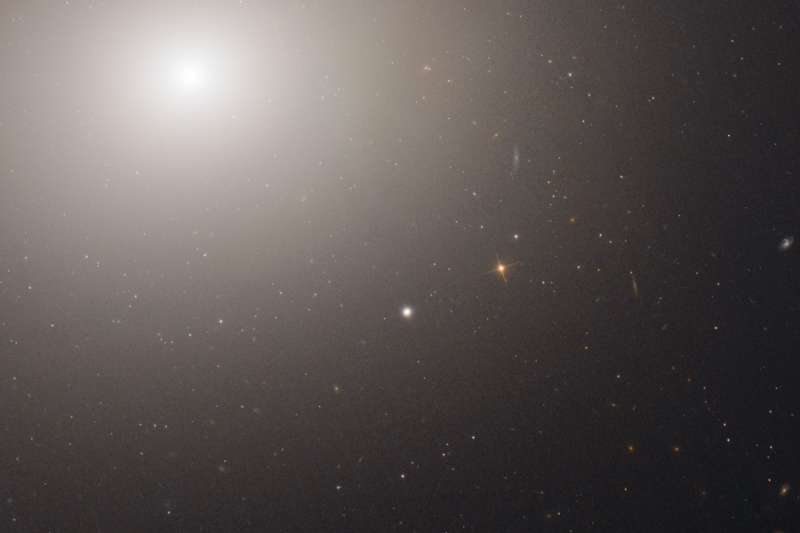
|
Credit & Copyright: NASA,
ESA,
Hubble Heritage Team
(STScI/AURA),
Jay Strader
(Michigan St. Univ.) et al.
Explanation:
The bright core and outer reaches of giant
elliptical galaxy M60
(NGC 4649) loom large at the upper left of this sharp close-up
from the Hubble Space Telescope.
Some 54 million light-years away and 120,000 light-years across,
M60 is one of the largest galaxies in the nearby
Virgo
Cluster.
In cosmic contrast, the small, round smudge at picture center
is now recognized as
an
ultra-compact dwarf galaxy.
Cataloged as M60-UCD1, it may well be
the densest galaxy in the
nearby universe.
Concentrating half of its total mass of 200 million
suns into a radius of only 80 light-years,
stars in the inner regions of M60-UCD1 are on
average 25 times closer together than in planet Earth's
neighborhood of the Milky Way.
Exploring the nature
of M60-UCD1, astronomers are trying to determine
if ultra-compact dwarf galaxies are the
central remnants of larger galaxies that have been
tidally stripped by
gravitatonal encounters, or evolved as massive
globular star clusters.
Recently discovered,
a bright
X-ray source seen at its center
could be due to a supermassive black hole.
If so, that would favor a remnant galaxy origin for M60-UCD1.
Note: How to find
APOD
Alternative Mirror Sites
|
January February March April May June July August September October November December |
| ||||||||||||||||||||||||||||||||||||||||||||||||
NASA Web Site Statements, Warnings, and Disclaimers
NASA Official: Jay Norris. Specific rights apply.
A service of: LHEA at NASA / GSFC
& Michigan Tech. U.
Based on Astronomy Picture
Of the Day
Publications with keywords: Elliptical Galaxy - dwarf galaxy
Publications with words: Elliptical Galaxy - dwarf galaxy
See also:
